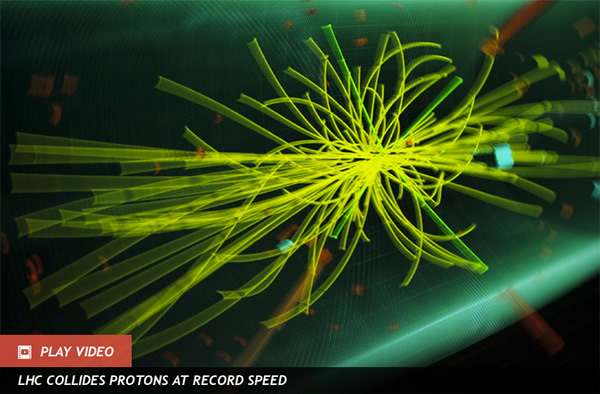Decoding the Higgs Boson: Is it the Real Deal?
Decoding the Higgs Boson: Is it the Real Deal?
On July 4, 2012, physicists announced the groundbreaking discovery of a subatomic particle that was “consistent” with the Higgs boson. Using data from two Large Hadron Collider (LHC) experiments — CMS and ATLAS — something with the approximate energy of the theoretical particle had been spotted.
“We have observed a new boson,” announced Joe Incandela, CMS lead physicist, to cheers from the audience at the special meeting in Geneva, Switzerland. Had the final piece of the Standard Model finally been found? Was this the end of physics as we knew it?
A year after that historic day, physicists are still trying to characterize this “new boson,” and although it certainly looks like the much sought-after Higgs boson, can the quantum hunt finally be laid to rest?
Well, in typical particle physics style, scientists are still working on it.
“We have established without a doubt that we have a new particle, and that it is a boson. What remains to be done is confirm that it is a Higgs,” said physicist Pauline Gagnon, CERN physicist and member of the 2012 discovery team.
Wait, we’re still waiting for “confirmation”?
The Higgs boson is the last piece of the Standard Model — the all-encompassing theory that describes the nature of subatomic particles in our Universe. Theorized by a team of physicists in the 1960′s, headed by Peter Higgs, the particle has been the focus of increasingly powerful particle accelerators. The 7.5 billion euro ($9.5 billion) LHC on the Franco-Swiss border was built, in part, to find the Higgs boson.
Investing all this time, energy and money into seeking out a subatomic particle has created the most complex experiment in human history, all in an effort to understand one of the most fundamental puzzles in physics. The Higgs boson is an “exchange particle” that endows all matter with mass; without it, the Universe as we know it wouldn’t exist. In short, for the Standard Model to be correct, the Higgs must exist, otherwise quantum physics is wrong and a revolution in physics awaits. (Physicists love physics revolutions, so not every scientist was overjoyed to find a boson exactly where the Higgs boson should be hiding.)
Since last year’s big announcement, the complex problem of characterizing the candidate particle has kept LHC physicists busy. Though a boson certainly exists at the energy level predicted for a Higgs boson, it’s not necessarily the Higgs boson. Some physicists support the idea that there is just one type of Higgs boson, whereas superstring theory proponents reckon there is at least five.
“Have we found the boson, or perhaps one of several predicted by other theories? Until now, everything indicates that this is the Standard Model boson,” Gagnon told the AFP news agency. “It has the allure, the look, the song and the dance of the Higgs boson.”
Indeed, shortly after the detection of the “new boson,” physicists had to work on understanding the other physical characteristics of the particle. To be a Higgs boson, the particle must have zero spin and positive parity. “Spin” is a quantum measurement of angular momentum and “parity” is a measure of how a quantum particle’s mirror image behaves. After analyzing 2.5 times more data than was available last year, physicists in March announced that their Higgs candidate had “no spin and positive parity.” So far, so good.
The more analysis that is done, the more it seems that the boson is looking like a bona fide Higgs. But some physicists are still trying to rule out the possibility that they are being duped by nature while others aren’t convinced that they’ll ever be able to say that this Higgs is the one and only Higgs.
“I’m not sure one will ever say this is the Standard Model Higgs boson,” said Bill Murray, deputy physics coordinator for the ATLAS experiment. “We will never be able to say it is the only one because there always could be one that is so incredibly heavy that you could never… make it.” Despite its mind boggling power, even the LHC may not be able to muster enough collision energies between protons to condense some of the high-mass theoretical Higgs possibilities.
So, as we get to know the Higgs boson, or one Higgs boson possibility, physicists will be working hard to rule out the possibility that Nature isn’t playing dirty tricks on their experimental results.
“You can never prove something is right, you can only ever prove something is wrong,” said Murray. “All we can do is rule out more and more alternatives.”(Jul 5, 2013 05:46 PM ET // by Ian O'Neill)












